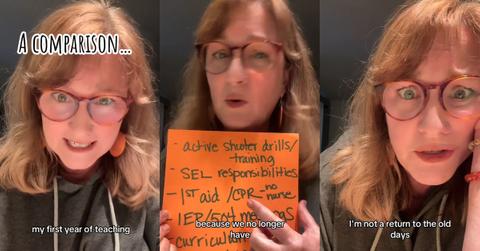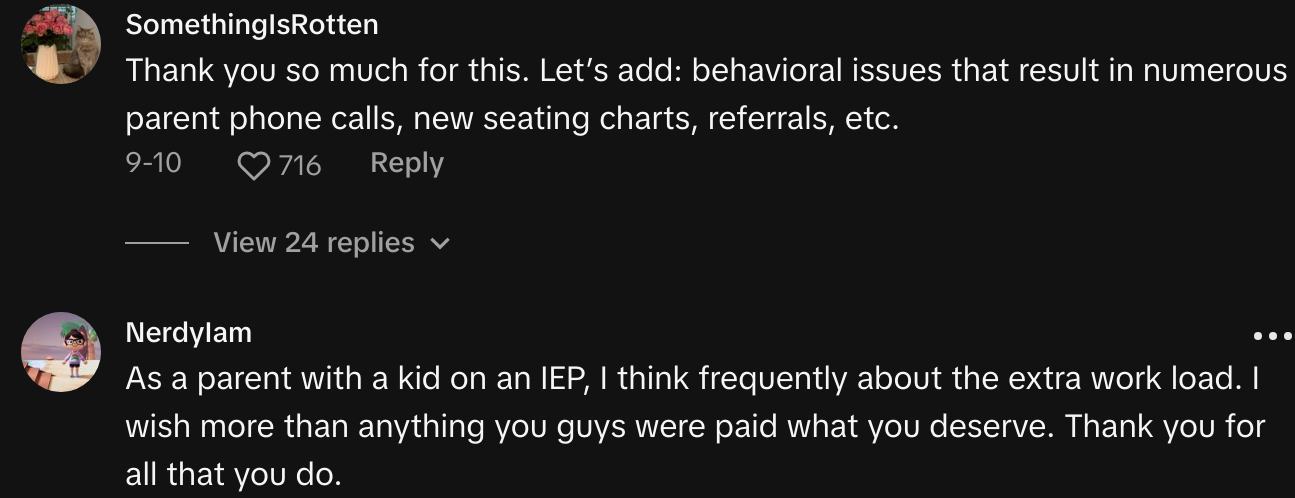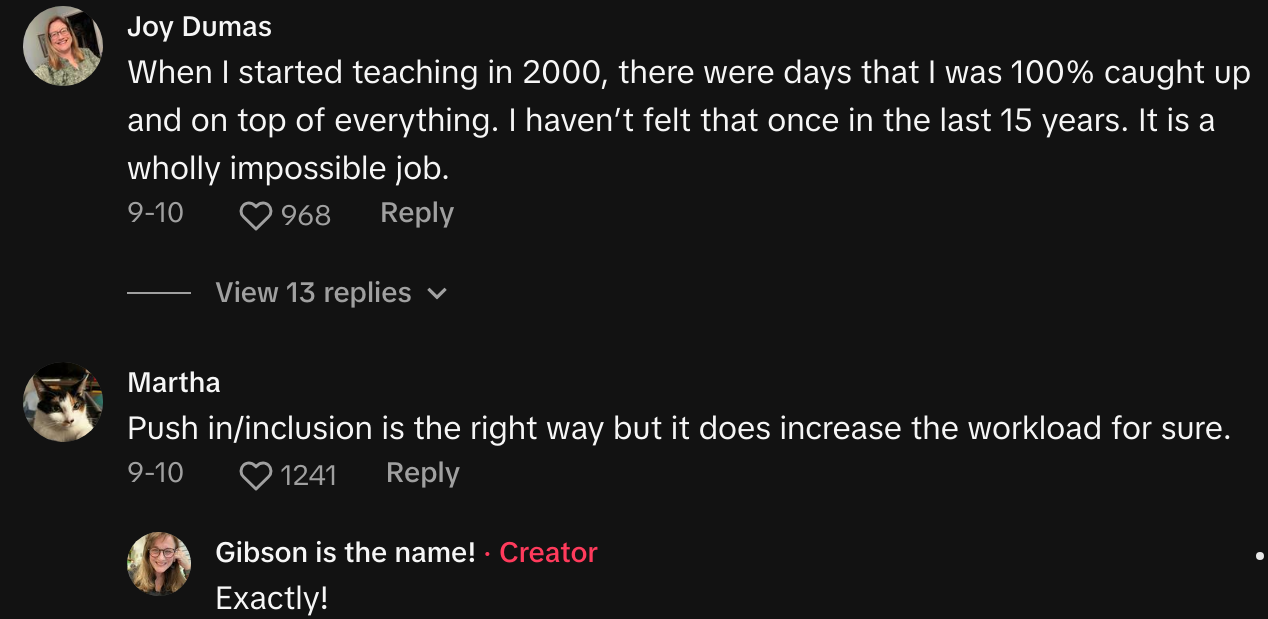Veteran Teacher Highlights How Much Harder Teaching Has Gotten Since the '90s
"No wonder I feel like I’m drowning…it’s because we are."
Published Nov. 11 2024, 8:00 p.m. ET

High school teacher Gibson (@gibsonishere) has the internet nodding along in solidarity with her TikTok rundown of how teaching has drastically changed since she began her career back in 1998.
Known to her students as a “sarcastic ray of sunshine,” Gibson takes her audience back to simpler times, when teaching was, well, just teaching.
Over the past two decades, however, her workload has piled up while the demands and responsibilities outside of the classroom have grown to unsustainable levels.

In her video, which has surpassed the 500K view mark, Gibson shared a list of everything that has been added to her job description, from longer hours to more meetings and an expanded role in students’ social and emotional wellbeing.
“In 1998, my work hours were 8 to 3,” she explains. “Now my work hours are 7:30 to 3:30.” Back then, Gibson had five classes to teach with two planning periods each day, which allowed her to prepare lessons, grade assignments, and actually catch a breath.
Today, she has six classes and one advisory class, covering four to five different subjects, with only one planning period. “And I only get that four times a week!” she adds, giving viewers a glimpse at the time crunch.
She then gets into the growing world of standardized testing, which was non-existent in her teaching life back in 1998. “You know how many standardized tests I had to give in 1998?” she says. “Zero.”

Today, even though she doesn’t teach juniors (the primary testing grade in her state), she’s required to administer three standardized tests per year.
Then there’s bus duty, weekly staff meetings, monthly department meetings, and, of course, active shooter drills. One of her biggest frustrations? Managing Individualized Education Programs (IEPs) for students with unique learning needs.
“I like the push-in model,” she clarifies, “but now, we get no extra time to work with those students and address their IEPs.”
Commenters, especially those who are teachers, flooded the comment section with stories of their own.
“The pay has not kept pace with the amount of work,” one teacher observed, hitting on a key issue. Another recalled a simpler time: “When I started teaching in 2000, there were days I was 100% caught up. I haven’t felt that once in the last 15 years. It’s an impossible job now.”

Others pointed out how teachers are expected to take on responsibilities that used to fall to parents. “When I was a kid we got report cards quarterly… Now we have to call every time they fail,” one commenter contributed, noting the shift toward constant parental communication.
This overwhelming amount of additional work isn’t just anecdotal. According to a 2024 Pew Research Center report, a striking 84% of teachers report there isn’t enough time in the workday to complete all the required tasks. From maintaining online grade books to attending frequent staff meetings, administrative tasks now take up a significant portion of a teacher’s day.
The RAND Corporation also released a recent report about the stress and burnout that teachers are facing, particularly with the rise in social-emotional responsibilities and safety preparedness training.

The shift to inclusive classrooms has also contributed to these workload changes. Today, students with IEPs are integrated into general education classrooms—a change Gibson supports but acknowledges can be taxing when teachers aren’t given time or resources to prepare for these additional needs.
Instead, they’re expected to juggle IEP requirements, attend meetings, and adapt lesson plans on their own.
Gibson’s video hit home for many because it sheds light on a conversation that’s been gaining momentum: today’s teachers are handling much more than just teaching.
With rising responsibilities, stagnant pay, and increased expectations, many teachers are calling for systemic changes. This demand has led to nationwide discussions on how we can support teachers more effectively. In the words of one commenter, “The good old days were really good!”